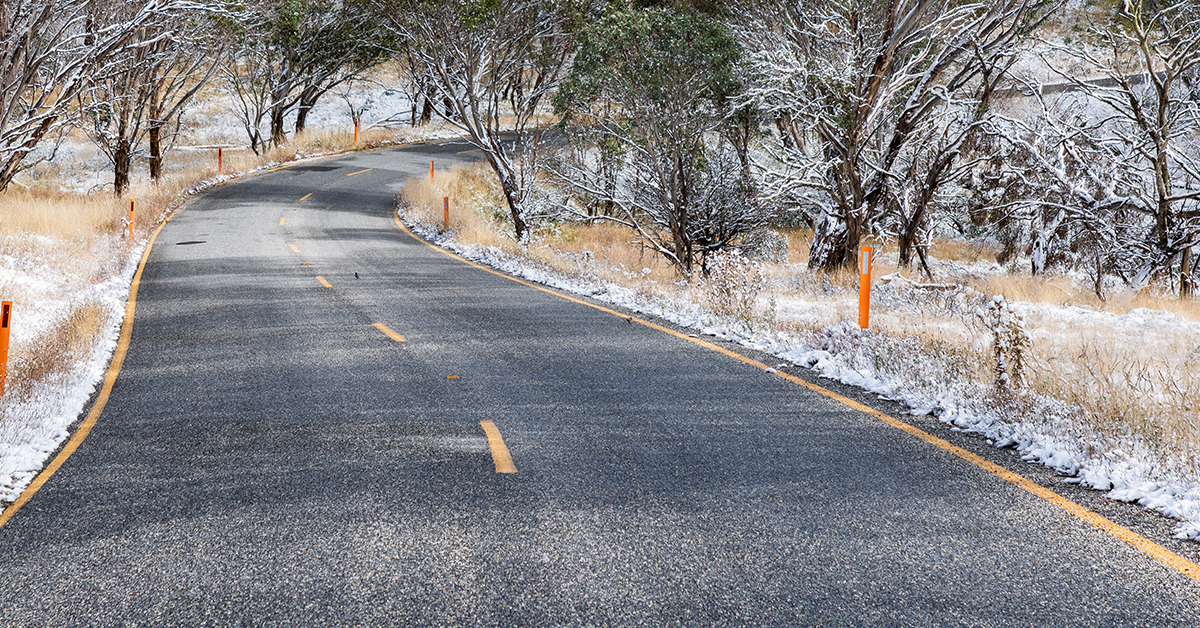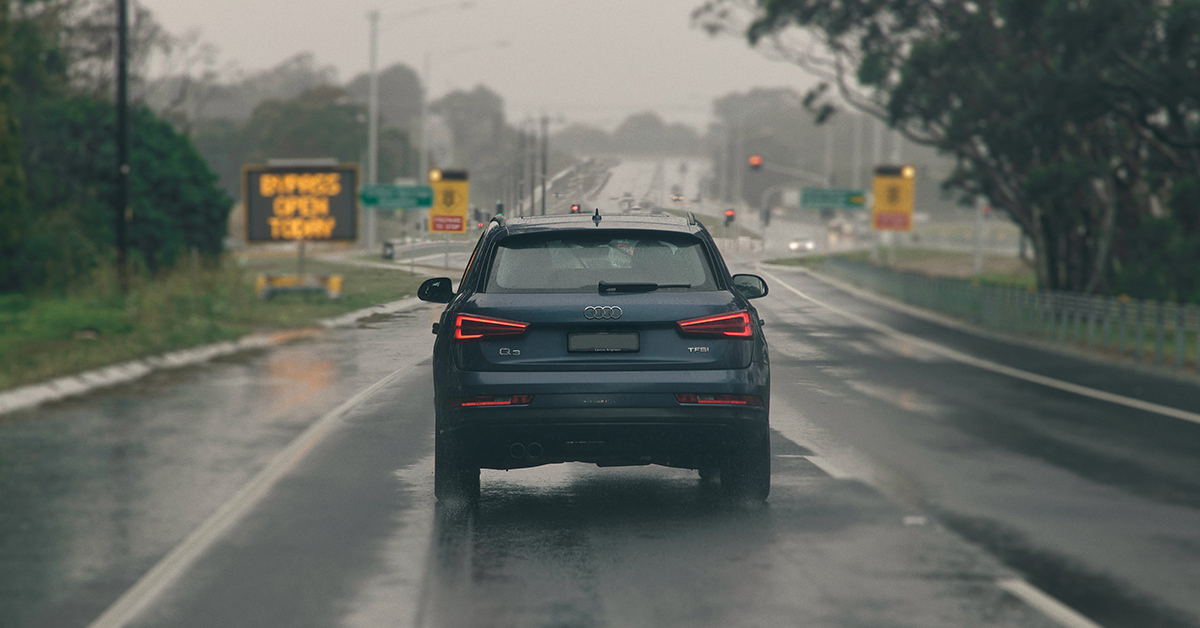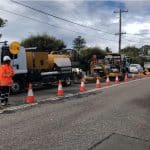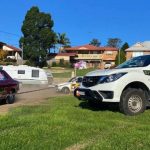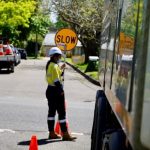Winter driving usually comes with challenges. Motorists need to take extra care driving during the colder months, especially on wet or icy roads. If winter in Sydney is generally short, when the rain starts traffic sometimes banks up, like what we’ve recently seen with the Hawkesbury River flooding in Windsor and North Richmond.
According to AAMI, Melbourne is home to Australia’s number one crash hotspot. While here in Sydney, Hume Highway in Liverpool is the most common crash hotspot, especially on Wednesday and Thursday evenings. In NSW, these are 153 lives lost in 2021, an increase of 2.7% compared to this time last year. In fact, someone is killed or hospitalised every 41 minutes because of a crash on NSW roads.
Winter driving often means driving in wet or hazardous weather, including fog and smoke. So, check the weather warnings and follow these 10 tips for safe winter driving.
1) Service Your Car
Check your car’s safety equipment, tyres, windscreen wipers, batteries, lights, and brakes. And, clean your windscreen and windows to ensure good visibility.
If it has rained, test the brakes to quickly dry out the brake pads and rotors. It reduces the chance of increased braking distance should you need to brake heavily shortly after coming out of water.
Make sure the tyres have enough tread depth (at least 1.5 millimetres), no damage, and are inflated to the correct pressure. Also, make sure you know how to use the front and rear windscreen wipers, fog lights, high-beam lights, front and rear demisters.
In addition, make sure you are prepared with jumper cables and blankets, in case of emergency. Keep cold-weather gear in your car like food and water, warm clothing, a flashlight, and a glass scraper. And, keep at least half a tank of fuel in your vehicle at all times.
2) Keep Your Distance And Slow Down
It takes longer to stop when the road is wet, so do not follow another vehicle too closely when it is, or has been, raining. You should at least double the following distance between yourself and the vehicle in front when the road is wet or visibility is poor.
Driving at high speeds is dangerous during winter. Slow down to allow for any cars that might brake suddenly in front of you, even if it means you’re driving under the speed limit.
3) Turn Your Headlights On
In many daytime situations, driving with your vehicle’s headlights on can improve the likelihood of being seen by other road users.
Transport for NSW recommends your headlights must be on when:
– Driving between sunset and sunrise.
– At any other time when there is not enough daylight to see a person wearing dark clothing at a distance of 100 metres.
In addition, you can use your headlights on high beams if you need to see further ahead, even if there are street lights.
4) Use Your Air-Conditioner
In wet weather, use your air conditioner to prevent your windscreen from misting up. If you do not have an air-conditioner, use the heater-demister. And, if necessary, open the windows.
But, if the visibility is limited to the point you can’t see the edges of the road or other vehicles, pull over and wait for the weather to improve. Use your hazard lights if your vehicle is stopped in a hazardous position, for example, obstructing other vehicles or pedestrians, or when you’re driving in hazardous conditions such as fog or rain.
5) Use Fog Lights Correctly
You must only use your fog lights in fog or other hazardous weather like rain, smoke or dust that reduces visibility. It is not allowed to have both front fog lights and headlights on at the same time.
If your vehicle does not have fog lights, you can use your low beam headlights and hazard lights in fog or rain. But, do not use high beams in fog or smoke as it makes the road more difficult to see.
A submission presented by the NRMA estimates that daytime running lights or the use of low beam headlights during the day could prevent 3 to 12% of crashes, incidents and pedestrian impacts.
6) Avoid Blind Spots
Use your mirrors and do a quick glance to the side to check blind spots as best as possible before you change lanes, merge or enter a roadway. Use your turn signal when ever changing or merging to alert other drivers.
Make sure your car’s windows are clean so you can:
– keep an eye out for anyone trying to merge onto the road from a lane that is on the other side of yours
– safely change lanes when needed.
7) Keep Your Car From Slipping
Avoid sudden braking. Steer gently in the direction of the skid to avoid jerking the steering wheel. If your front wheels begin to slide, take your foot off the accelerator and allow the vehicle to slow.
Leave plenty of room between you and the vehicle in front of you so sudden braking isn’t necessary.
8) Reduce Distractions
Don’t be involved in crashes, and avoid fines from the police. Reduce visual, manual and cognitive distractions even when you’re not a busy road:
– A lack of sleep or stress can cause cognitive distraction and on a winter road where it can be wet or lacking visibility, it can be extremely dangerous.
– Switch your phone to “Do Not Disturb” mode. Distracted driving numbers have increased since the advent of the smartphone. Looking at your phone adds up to your reaction time and you can’t afford this on hazardous winter roads.
– Don’t turn your head or slow down to look at outside events (for instance an accident) as you might end up too close to the driver in front of you or crash into the vehicle.
– Make sure you pay more attention to the road than to your passengers.
– Don’t try to reach for devices while driving. You might lose control of the vehicle. Make sure your seat is properly adjusted before you start driving and you’re not thirsty or hungry and need to grab food/water in your bag.
9) Maintain The Power Of Your Battery
Battery failure is common during winter. Go for a charger with an automatic battery-charge monitoring feature.
An older battery is less likely to withstand extreme weather, so if your battery keeps losing its spark even while charging, it’s probably time to replace it.
10) Avoid Aquaplaning
You’re driving along and the tyres slip and do not respond to steering, braking or accelerating. Your vehicle can even skid or spin.
Hydroplaning or aquaplaning happens when water is forced beneath the tyres, rather than dispersed through the grooves in the tread. The result is a layer of water between the road and your tyres.
If you find yourself aquaplaning, do not brake or turn suddenly because this could throw your car into a skid. Instead, ease your foot off the accelerator until the car slows and you can feel the road again.
If you need to brake, do so gently with light pumping actions. If your car has ABS, then brake normally. The car’s computer will mimic a pumping action when necessary.
To avoid aquaplaning, Michelin Australia advises:
– Check your tyres pressure monthly. Tyre pressure below 30 percent of what is recommended greatly increases the risk.
– Check the tyres wear and tread depth monthly. The more tread depth you have, the more water your tyres can disperse.
– Reduce your speed when approaching big puddles or standing water.

Extra Tip For Safe Winter Driving: Take Flooded Roads Seriously
Never drive on flooded roads. The major cause of death during floods occurs when people enter or travel through floodwater. Motorists in high-risk flood areas should be aware of evacuation routes and be prepared before extreme weather events. Contact your local council for local road closures or visit the Live Traffic NSW website for major road closures.
Flooded roads pose big risks when driving and just 15cm of flowing water can take control of a small car. Ploughing through a flooded section can allow water to get into gear casings, electrical systems and cause the engine to draw in water — potentially causing a safety issue if you get stuck. It is recommended that if a car has been submerged in water that it be taken to a mechanic and checked.
Remember, wet brake pads and rotors cannot work as well as when they’re dry because water, like any liquid, reduces friction. The RAC advises finding another route if you’re driving towards a section of flooded road. If this is not possible, take extra caution and drive slowly to reduce the chances of water being forced into places it shouldn’t go.
Emergency Numbers
-
For emergency help in floods call the NSW SES on 132 500.
In life threatening situations call 000 (Triple Zero).
Do you have more safety tips for safe winter driving?
Let us know! Absolute Traffic Management is dedicated to making roads safer in Sydney and NSW, Australia. We provide safe traffic management solutions at an affordable price. Contact us and let us know about your project.





